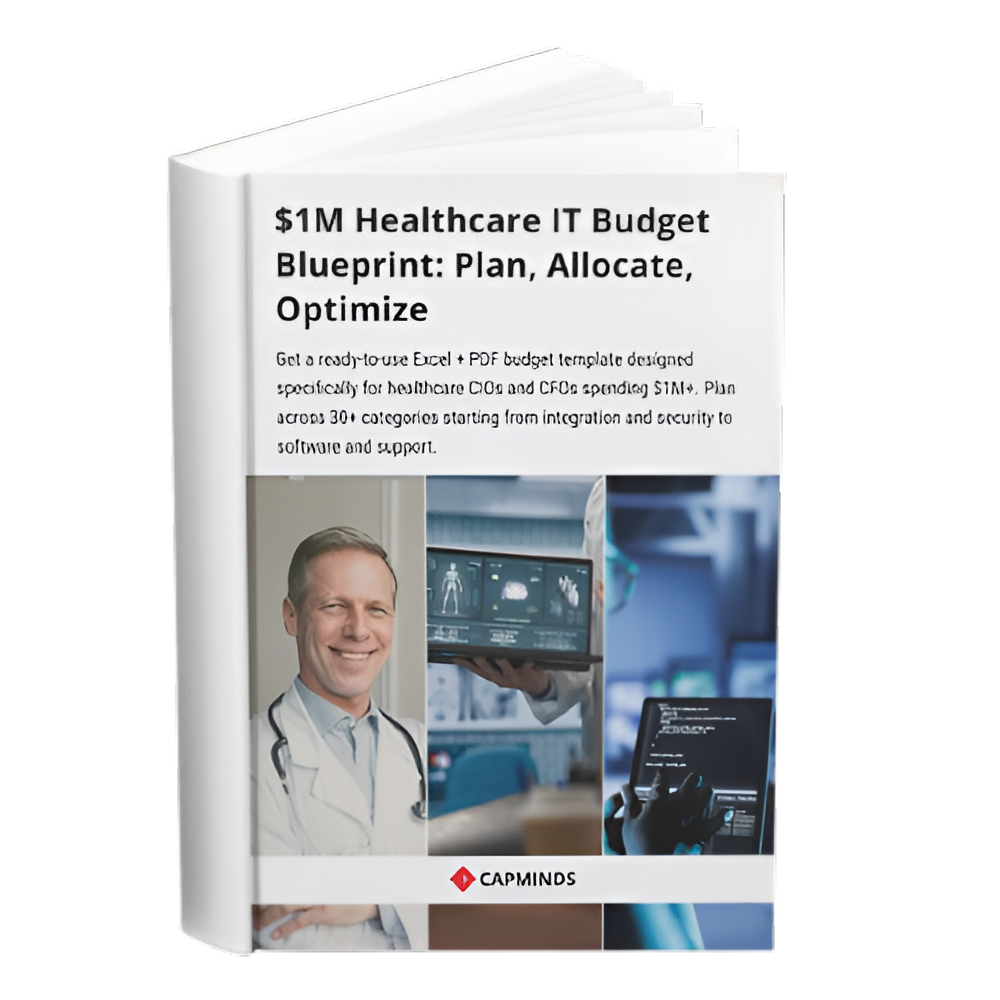7 Ways to Stretch Your $300K Medical Billing Budget With AI Automation
Managing a $300K annual billing budget is a constant challenge as costs rise and reimbursement grows more complex. Traditional billing and coding processes are labor-intensive: one report notes that administrative tasks, primarily billing and coding, consume up to 30% of healthcare spending.
For a constrained budget, every dollar saved on denials, rework, and manual effort directly boosts the bottom line. AI-driven automation can streamline workflows across the revenue cycle, slashing errors and cycle times while improving cash flow.
Leading examples show AI solutions can reduce claim denials by 30–50% and speed up processing by as much as 80%.
This list explores seven practical AI strategies, each illustrated with relevant metrics that CFOs and practice managers can deploy to maximize their billing budget.
Stretch Your $300K Medical Billing Budget Using AI Automation
1. AI-Powered Claim Scrubbing and Clean-Claim Assurance
AI-driven claim validation tools automatically check each claim before submission, catching errors in patient data, coding, benefits, and documentation.
By scrubbing claims for missing or mismatched information, AI sharply increases the clean-claim rate and first-pass acceptance. In practice, providers using AI-enhanced claim processing report 30–50% fewer denials and up to 80% faster claim turnaround compared to manual workflows.
For example, one AI system proactively caught coding and eligibility issues, “decreasing denial rates by up to 30%” before submission. Reducing denials in this way means more revenue recognized on the first attempt and far less time spent on appeals.
Key metrics improved by claim-scrubbing automation include:
- First-Pass Resolution Rate: Higher share of claims paid on first submission (target 90 %+).
- Claim Denial Rate: Significant reductions (often 30% or more).
- Days in Accounts Receivable: Faster payments shorten A/R days by accelerating billing cycles.
- Administrative Burden: Fewer claims to re-work means fewer staff hours (Enter.health reported a 60% cut in manual billing time in one case).
Related: The Ultimate 10-Step Guide to Faster Medical Claims Billing via Clearinghouses
2. AI-Enabled Coding Accuracy and Optimization
Automated coding assistants use natural language processing to translate clinical notes into billing codes. This reduces 80% of medical bills that have at least one coding error (a well-cited industry stat) and dramatically boosts coding throughput.
AI improves coding accuracy and coder productivity by minimizing manual entry and catching incorrect or outdated codes. One case study found that AI-driven coding achieved a 98% accuracy rate, allowing a health system to reassign 5 full-time coders to higher-value tasks and reduce coding costs by about 90%.
In practice, deploying AI for coding optimization yields these financial and operational benefits:
- Error Reduction: Coding errors (a leading cause of rejections) drop substantially, cutting down subsequent denials and resubmissions.
- Throughput and Productivity: Coders process claims faster (up to 2–3 times more charts per day), freeing staff from tedious tasks.
- Cost Savings: Less manual effort means lower labor costs and overtime. (A CFO can measure ROI by reduced FTE spend or overtime hours.)
- KPI Impact: Track coding accuracy (should trend upward) and coder-case volume as proxies for efficiency.
The American Hospital Association notes that AI-driven NLP systems can automatically assign billing codes from documentation, “reducing manual effort and errors”. As coding accuracy improves, so does the First-Pass Claim Resolution Rate, further stretching the budget by getting paid faster on more claims.
3. Automated Denials Management and Appeals
When denials do occur, AI can dramatically accelerate resolution. Automated denial management platforms triage denials in real time, flagging them for review and even auto-generating appeal letters with supporting documentation. These systems use machine learning to predict which denials are likely to be overturned and route them efficiently for human or automated appeal.
The net effect is a large uptick in overturned denials and recovered revenue. For instance, AI-managed appeals have been shown to cut appeals processing time by 80% or more and retrieve substantial reimbursements that would otherwise slip through the cracks.
Key performance impacts include:
- Denial Reversal Rate: A Higher share of denials are successfully appealed or corrected.
- Days to Reimbursement: A Shorter cycle from denial to payment means lower A/R.
- Staff Efficiency: Billing teams spend far less time on routine resubmissions.
- Cost Reduction: Automated appeals reduce outside collection or legal costs.
In one example, an AI system “auto-generated appeal letters with supporting clinical evidence,” effectively eliminating many manual steps and improving appeal outcomes.
Healthcare providers with AI-enabled denial workflows report that they resolve issues up to 10 times faster than before (while still achieving a 98% first-pass resolution rate on those reworked claims). This translates directly to better cash flow.
Related: 10 Medical Billing Denial Codes That Affect Your Revenue
4. Predictive Analytics for Proactive Denial Prevention
Beyond reactive appeals, AI analytics can predict and prevent denials before they happen. By analyzing historical claim outcomes, payer policies, and coding patterns, machine learning models score each new claim for its risk of denial. Claims flagged as high-risk can be reviewed or corrected upfront. This proactive approach optimizes the workflow: fewer denials mean fewer clean-up tasks later.
For CFOs, the benefit is a more stable and predictable revenue stream. In one case, a hospital using AI analytics achieved a 25% reduction in denial rates in six months by catching issues early. Metrics to monitor here include:
- Denial Prediction Accuracy: Over time, models become better at flagging truly high-risk claims.
- Clean Claim Rate: Increases as more errors are caught pre-submission.
- A/R Days: Shortens as denials fall and claims move quickly to paid status.
- Cash Flow Variance: Predictive insights reduce volatility in monthly collections.
These gains are grounded in data. As one industry source notes, AI can “identify patterns in past denials, flagging high-risk claims before submission”, allowing teams to fix issues proactively.
Paired with smart business intelligence, these predictive tools give CFOs the power to reallocate budget dollars: instead of hiring more appeals staff, invest once in a predictive model that prevents waste.
5. AI-Assisted Prior Authorization and Eligibility Checking
Denials often stem from failed authorizations or invalid insurance coverage. AI can automate both prior-authorization submissions and eligibility verification, a major cost center.
Manual PA processes typically consume 14+ hours per physician per week, roughly $82,000 in annual overhead per doctor. An AI agent can fill forms, check payer rules, and follow up automatically. The result is dramatically fewer delayed or rejected claims due to authorization issues.
Notably, AI-driven authorization systems can process requests ten times faster than human staff while maintaining about a 98% first-pass success rate. This speed and accuracy mean patients get treated sooner, and claims with required approvals sail through without denials. Key metrics include:
- Authorization Turnaround Time: Often falls from days to hours.
- Authorization Approval Rate: Moves toward 100% on correctly submitted requests.
- Denied-for-Auth Rate: Drops precipitously.
- Staff Hours on PA: Plummets, as bots handle the routine work.
For CFOs, automated PA translates to real dollars: every denied or delayed procedure is a deferred payment. By slashing PA overhead and denials, AI extends the budget’s reach across more cases.
Related: OpenEMR’s Prior Authorizations Module: Technical Insights and Code Snippets
6. Intelligent Payment Posting and Reconciliation
After payers remit, AI systems can speed up cash posting and catch underpayments. Automated payment posting ingests electronic remits, matches payments to claims, and flags any discrepancies. This removes weeks of manual work for billing staff and immediately surfaces any underpaid or unpaid claims. Benefits and KPIs here include:
- Time to Cash: Posting payments same day instead of days or weeks.
- Underpayment Recovery: More underpayments and missed charges are identified early, improving net collections.
- Billing Errors: Reduced administrative errors (one AI solution drove an up to 40% reduction in billing errors across the cycle).
- Efficiency: Staff reassign from tedious data entry to strategic tasks (tracking a few exceptions rather than processing thousands of lines).
For example, one AI-powered RCM platform automated ERA posting and payment reconciliation so effectively that it reduced billing errors by 40%.
Faster reconciliation keeps cash flowing and prevents revenue leakage. CFOs should track cash posting lag time and net collected versus expected payment to gauge ROI.
7. Data-Driven Analytics and Revenue Cycle Optimization
Finally, AI can analyze the revenue cycle end-to-end, revealing hidden inefficiencies. Advanced analytics platforms digest data across billing, coding, and collections to forecast revenue, simulate scenarios, and recommend process tweaks.
The insights help managers reallocate resources (e.g., assigning more staff to high-denial payers) and justify technology investments. Important outcomes include:
- Forecast Accuracy: Improved budget planning as AI models predict monthly cash collections more reliably.
- Accounts Receivable (A/R) Days: Even small percentage improvements compound – one AI deployment cut A/R days by 13% in six months.
- Staff Utilization: Automation of repetitive tasks (via RPA) frees staff to focus on high-value work.
- Revenue Leakage: Analytics pinpoint where claims get stuck or are underpaid.
Healthcare automation experts report that roughly half of hospitals now use AI for RCM processes. By leveraging these data-driven tools, CFOs can continuously tune operations.
For instance, predictive dashboards can flag weeks where claims volume spikes, allowing for advance staffing adjustments. Over time, the incremental gains – tighter revenue forecasts, lower days in A/R, and fewer write-offs – multiply, effectively stretching every dollar of the billing budget.
Optimize Your Medical Billing with CapMinds Service
Managing medical billing efficiently is crucial for a financially healthy practice, but dealing with claims, coding, denials, and compliance can be overwhelming. CapMinds is here to help you!
Our end-to-end medical billing services ensure seamless claim processing, higher reimbursements, and reduced denials, so you can focus on delivering quality patient care.
Why Choose CapMinds for Medical Billing?
- Faster Claims Processing – Minimize delays and boost revenue.
- Error-Free Medical Coding – Reduce claim rejections with accurate CPT & ICD coding.
- Denial Management & Appeals – Recover lost revenue efficiently.
- Compliance & HIPAA Security – Stay aligned with industry regulations.
- Dedicated Client Manager – Personalized support for your practice’s needs.
- 24/7 Billing Support – Expert assistance whenever you need it.
With CapMinds, you get a trusted medical billing partner that enhances cash flow, improves operational efficiency, and optimizes revenue cycles.
Let us handle your billing complexities, so you can focus on growing your practice!
Contact CapMinds today and experience hassle-free medical billing!




